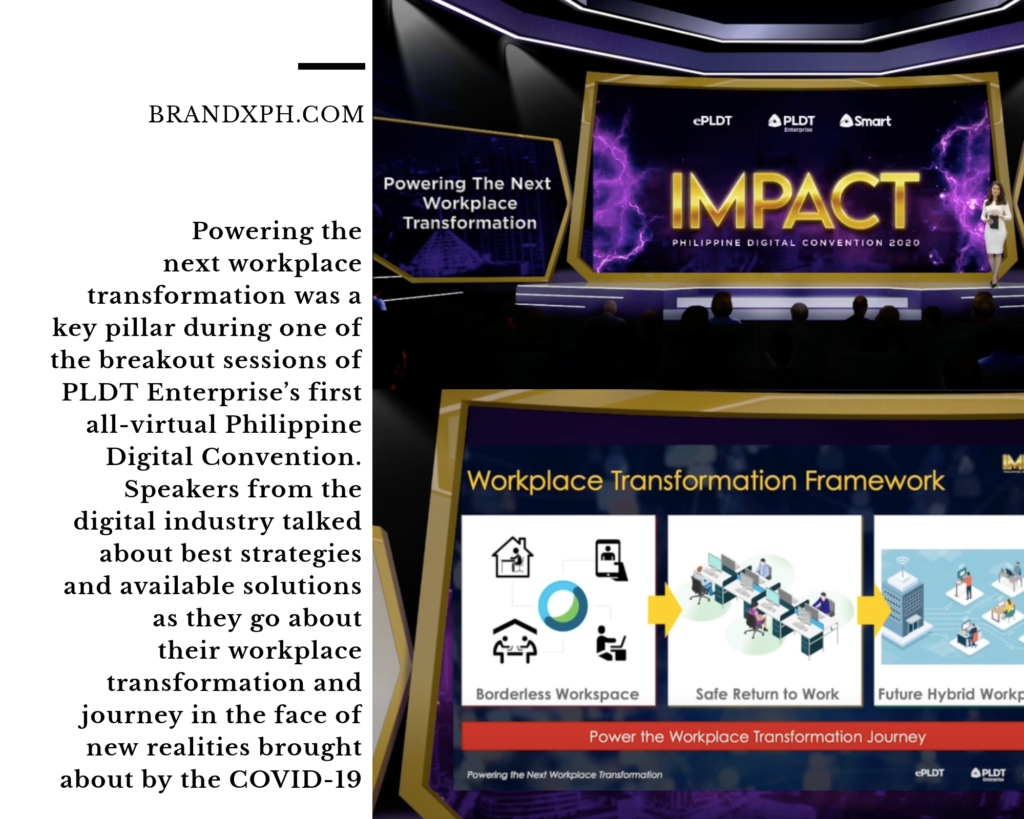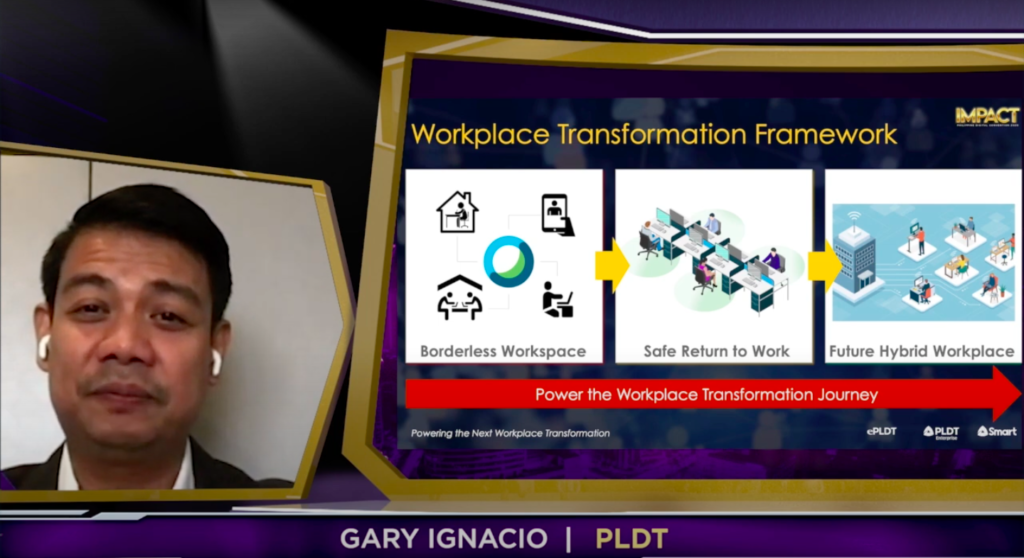
With the current work landscape brought about by the pandemic, businesses are now called to empower both traditional in-office and remote working arrangements to continue their operations. It has propelled industries to adapt, become more agile and digital, and exploring the possibilities of having physical and virtual workspaces.
Powering the next workplace transformation was a key pillar during one of the breakout sessions of PLDT Enterprise’s first all-virtual Philippine Digital Convention. Speakers from the digital industry talked about best strategies and available solutions as they go about their workplace transformation and journey in the face of new realities brought about by the COVID-19 pandemic.
The New Realities: Reimagined Workplaces
“As a result of COVID-19, work life has become how it is today, and the workplace is set to change forever. The road to recovery will take time and adjustments have to be made to survive and thrive. Most will have to be strategic modifications challenging traditional conventions, as we rethink current practices, enforce new protocols and leverage more on data connectivity and new technologies such as collaboration tools and workplace automation,” said Gary Ignacio, Vice-President & Head, Fixed Core Business Solutions of PLDT Enterprise.
“The new reality dictates that we open our eyes to the concept of Hybrid; in a post-Covid world, the traditional office environment will most likely get obsolete. The hybrid workplace has already emerged, it embraces full workforce flexibility and we expect that it will become the norm even after we’re all safely able to return to our places of work,” he added.
A CEO PH Survey conducted showed that 73% said they will continue to have a WFH policy; 80% said they will increase technology and digital investments, and 40% of CEOs believe there will be reduction in office space in the near term.
In retrospect, workplace transformation in the age of COVID-19 was forced on all industries. Businesses had to immediately adapt, enabling WFH quickly without the necessary standards or consistency. The transitionary return to work phase entailed a lot of designing and retooling of employees, where workplace had to be reimagined, taking in mind protocols and space standards such as social distancing and user densities, and contactless experiences.
It is therefore important that the workplace transformation context takes into mind how to properly respond, reinvent, re-design and retool, where a borderless workspace is created, safe return to work is ensured, and future hybrid workplace is set into place.

The Emerging Borderless Workspace
PLDT Enterprise Category Head Marc Roxas expounded on the concept of borderless workspace. Telecommute, or WFH, has taken businesses by storm. Companies were forced to shift to new ways of operating, where decision makers relied on virtual meetings and employees transitioned to a home office setup. With employee health and safety in mind, priorities shifted from growth and expansion to how business can navigate these unchartered waters and ultimately survive.
One tool enterprises can leverage on for this new work setup is PLDT Enterprise’s latest solution called BEYOND FIBER, an all-in-one digital solution that will enable businesses of any size with curated digital tools and Wifi fit for enterprise – all anchored on business-grade fiber.
It redefines business burst speeds providing a bandwidth of up to 50 MBPS with an enhanced service promise: to give a minimum of 90% of subscribed bandwidth at 90% service reliability. That is 3x the minimum bandwidth activity offered today.
The WFH setup is more secure because it is cloud-managed, easier and scalable, and configuration is managed. The curated digital solutions are specifically for remote work, for productivity and collaboration, and for tools and device security, all with superior connectivity, and robust and secure Wifi.
The Resilient Distributed Enterprise: empowering the workplace
PLDT Senior Manager & Head for Transformative Enterprise Networking Solutions Orvin Reyes points out the importance of revisiting business continuity planning (BCP) for organizations. Gartner showed that only 12% of organizations were highly prepared for the impact of the coronavirus. Conserving cash has become a priority for most organizations, IT projects are being closely scrutinized or re-prioritized, and those without a tangible ROI in the medium term are either being deferred or cancelled. There is, however, a sharper focus on cloud and digital automation and cyber security.
Overall, there is a realization that technology can be leveraged to ensure business continuity, even in extreme circumstances. But with this borderless environment, consistency of the user experience has to be ensured. With Resilient Distributed Enterprise (RDE), the traditional building blocks of IT infrastructure becomes irrelevant.
Reshaping the Future with Transformed Technology
Quickly embracing reality and being able to pivot are crucial for enterprises to become successful in this new business landscape. The challenges in transitioning from in-house to remote workplace are security, mobility, and seamless connectivity, which PLDT Enterprise aims to address. Collaboration is key in ensuring that all sectors of workplace issues are addressed, putting in mind that reshaping the future of the workplace will lead to a lasting and effective transformation.
The Philippine Digital Convention (PH Digicon 2020) was organized by PLDT Enterprise, the B2B arm of the largest and only integrated telecommunications company in the Philippines.
For more information on PH Digicon 2020, visit www.pldtenterprise.com/phdigicon2020.





